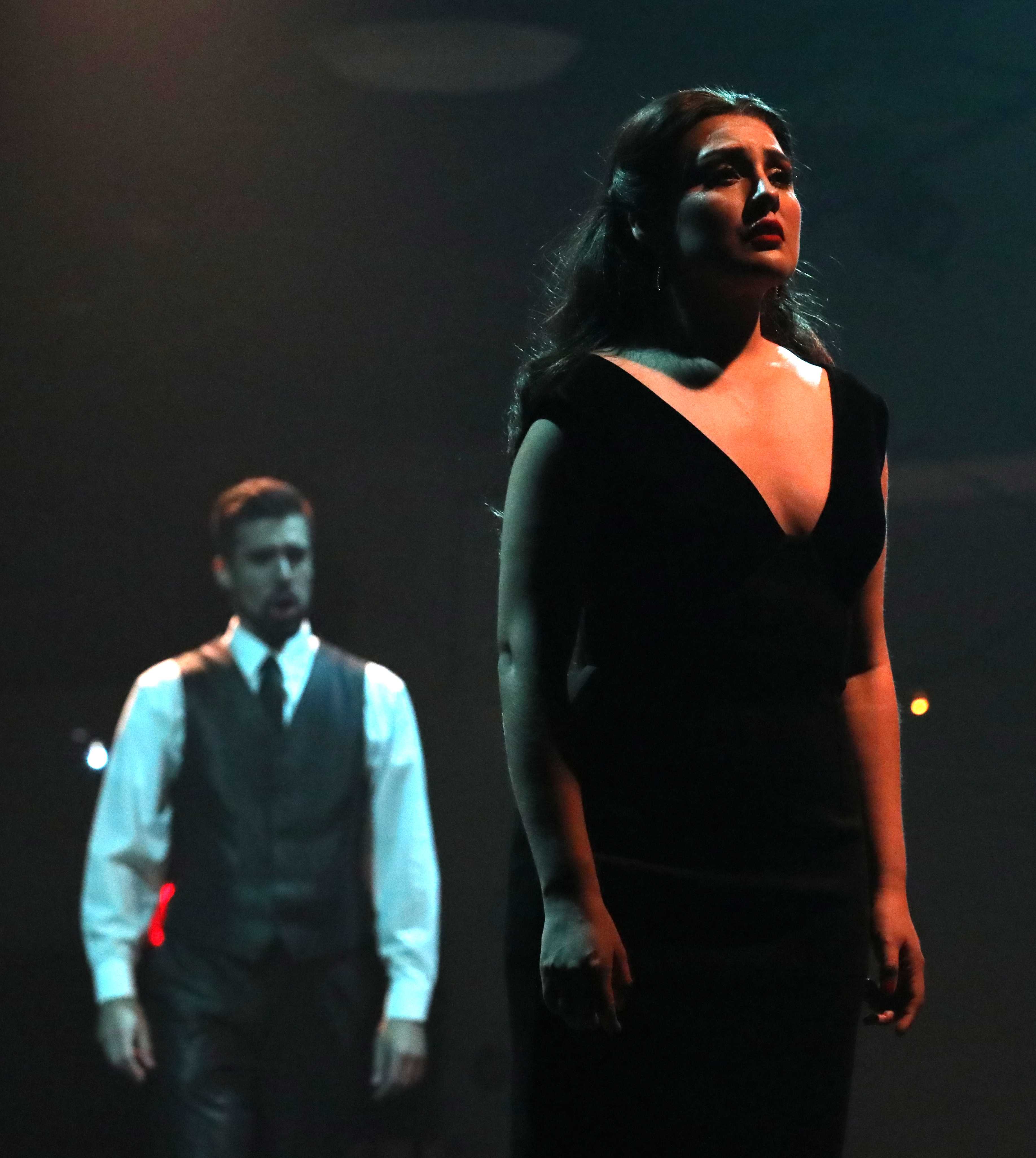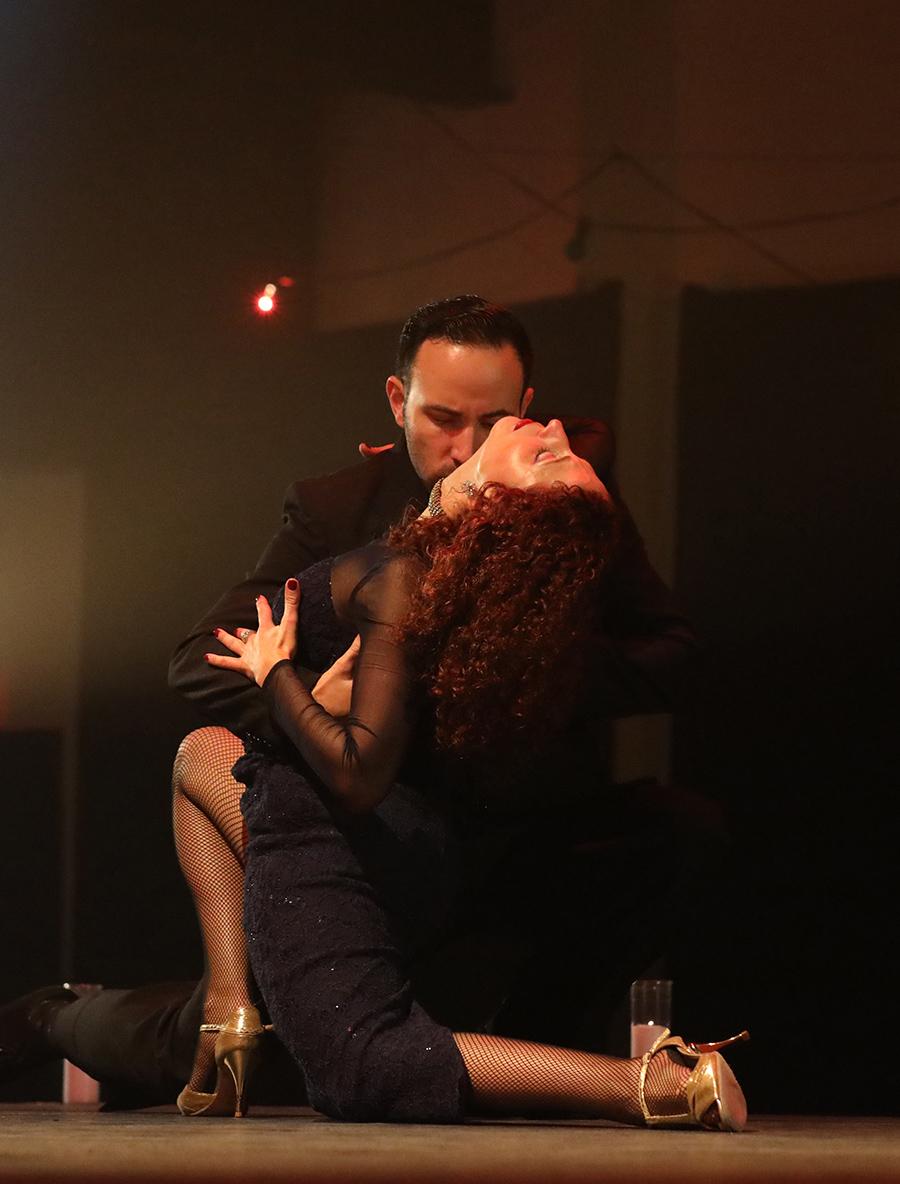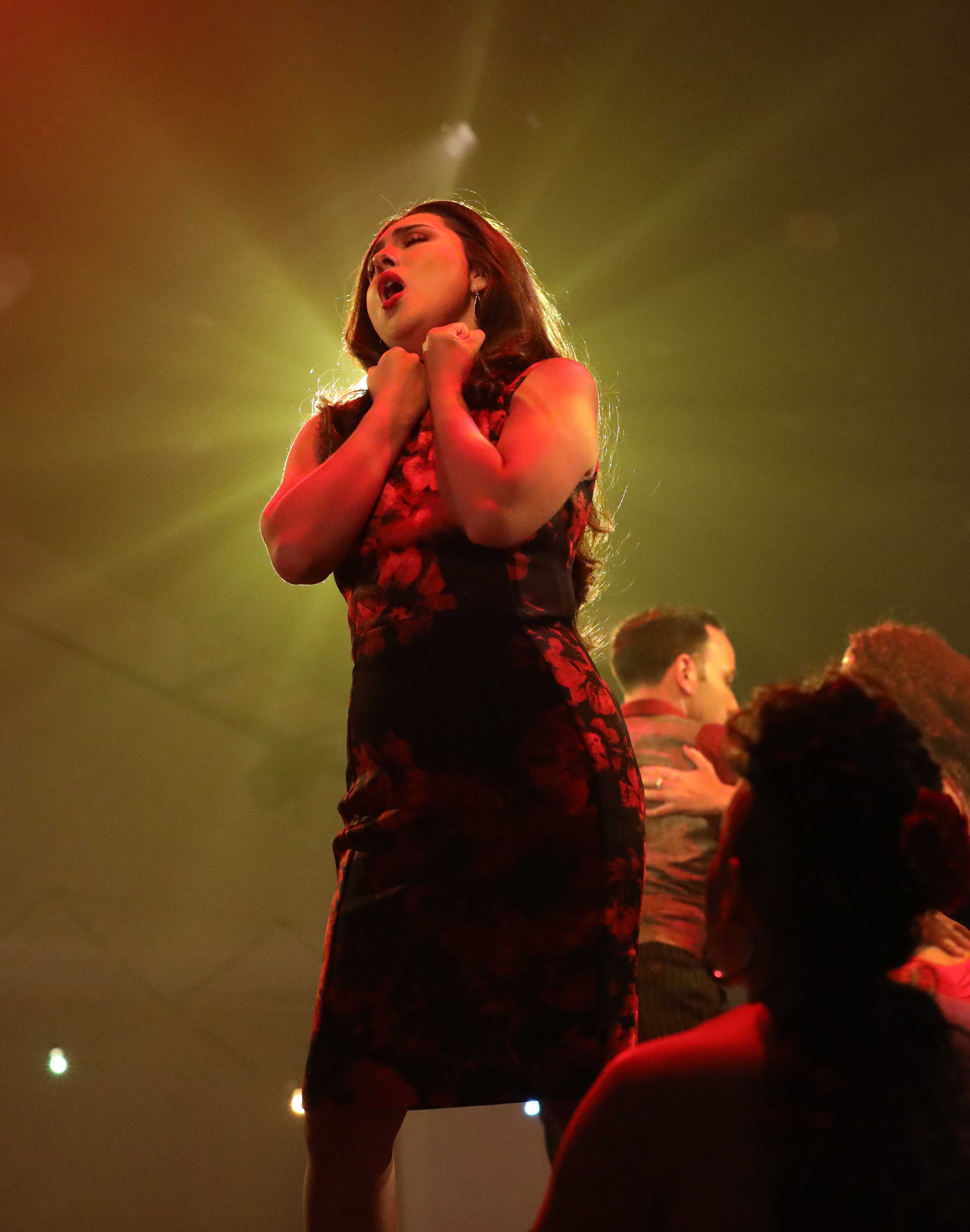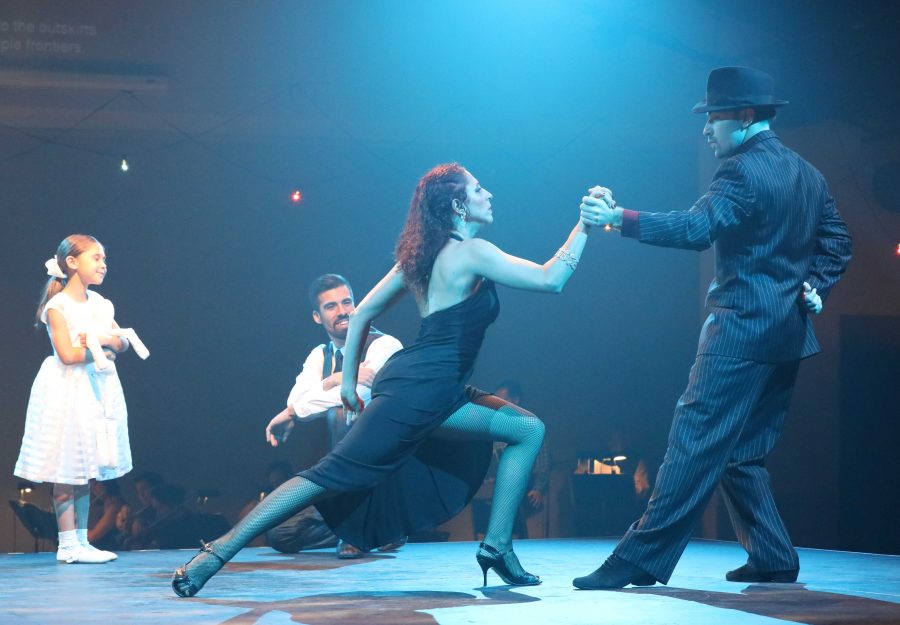When “Maria de Buenos Aires,” a tango operita, debuted in Buenos Aires, Argentina in 1968, the opera did not gain much traction. Fast forward 49 years to its opening in Nashville, Tennessee, and the show sold out before the Opera’s 2017 season.
Around 8:00 p.m. on Saturday, Nov. 11, The Noah Liff Opera Center transformed into a smoky, intimate tango club. Guests in sparkling floor length gowns and well-fitted suits sipped on Malbec and spoke to strangers in hushed voices over the candlelit tango tables. Circling the elevated stage, the crowd knew it was in store for a new take on the traditional art of opera.
“Once you come into this space, you enter a different world. You’re not walking into a theatre; you’re coming into an experience,” said Nashville Opera CEO and Artistic Director John Hoomes.

The opera follows the life of Maria, played by mezzo-soprano Cassandra Zoé Velasco, throughout her life as a prostitute in Buenos Aires. Seduced by the city and its tango, the audience watches as she returns to the streets as the Shadow of Maria following her death. “Maria de Buenos Aires” is an abstract tale of lust, loss and tango with music by Ástor Piazzolla and libretto by Horacio Ferrer. For the entirety of the performance, the Spanish lyrics’ English translations were projected onto the wall.
However, the translations did not necessarily answer all of the audience’s questions.
As a surrealist opera, the music and lyrics arrived to Hoomes without guidelines on how to convert this tango operita to a staged show. With lines such as, “When the sound arouses me, I will bite it hard in the mouth” and “So many things, one by one, spring from her ovaries,” it’s not exactly clear who exits stage left, or whether there is a stage left.
“I wanted to listen to the pure music and use the text as a guidepost. Little by little, I would arrive at imagery. I looked at it like being a writer or painter with a blank canvas. It was my job to see something in the blankness,” said Hoomes.
As he explored options for the performance, Hoomes remained fixated on capturing the danger and sensuality he felt when he visited hole-in-the-wall Buenos Aires tango clubs. The force behind Maria’s authenticity and the show’s successful mystique? A dynamic pair of professional Argentine tango dancers, Jeremias Massera and Mariela Barufaldi, and a bandoneón, which is a squeezebox that drives the distinctive tango sound.

Perhaps most importantly, Hoomes found the perfect Maria in the petite, sympathetic Velasco, a young opera powerhouse from Mexico City.
“I always sing the role of ‘the good girl,’ so I was surprised when John cast me. I loved that he was not interested in ‘Maria, the prostitute,’ but rather in ‘Maria, the woman.’ Because this is a surrealist opera, I’ve had the freedom to choose who she is,” said Velasco.
Channeling her experience at Teatro Colón in 2012 and employing her smoothest porteña accent, Velasco brought an entrancing, vulnerable Maria to the often hardened role. Through swift vocal transitions and visibly raw emotion, it was tempting to overlook the seductive tango performance and focus on Velasco as she dominated the stage.

Despite its beauty and dark romance, “Maria de Buenos Aires” is extremely nonlinear and heavily reliant on symbolic, metaphorical language; this opera is not for those who seek closure or set answers. Upon exiting the show, audience members who watched the same opera could leave with completely different interpretations. Astonished commentaries and questions such as, “Who is el bandoneón?” left viewers strained and seeking answers—exactly the way that Hoomes wanted.
“If the audience thought they could put the opera art form in a box, I want this show to push the boundaries. This genre is huge and can be done so many ways. I want them not only to relish in the music, but to walk away thinking, ‘If ‘Maria de Buenos Aires’ is opera too, then I need to rethink my position.’”
spotify:album:5IURdmInoT9rLexsfQoP7p

